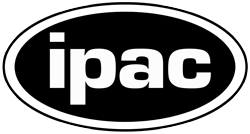1. Where can we find the first science images taken by Euclid?
You can access the Euclid Early Release Observations (ERO) via ESA cosmos website. For an easier US access, the IPAC Infrared Science Archive (IRSA) also offers the ERO data at IRSA. You can also explore the ESA news release for ERO data. The science papers on the ERO data can be found at the Euclid Consortium Publication page here.
2. Where can we find the Euclid reference papers?
The Euclid reference papers describing the mission, survey, calibrations and etc can be found at the Euclid Consortium Publication page. The most essential references can be found here.
3. Where can we find the detailed information about Euclid surveys?
All public information and details about the Euclid surveys (including the deep fields) are available on this public webpage.
In addition, the new paper on the "Overview of the Euclid mission" by Mellier et al. 2024 describes the Euclid surveys in section 4.
4. When is the first public data release?
The first Euclid public data release was the Euclid Early Release Observations (ERO), see Question 1 above.
Next is Quick Release 1 (Q1), in March 2025. Click here for the scope, content, and data product definition of Q1.
Next is Data Release 1 (DR1), in June 2026. You can find the timeline for the data releases here.
5. How does the field of view of the Euclid infrared camera compare with those of the JWST and HST?
Euclid NISP instrument has a field of view of ~0.53 deg2. While field of view for JWST/NIRCAM and HST/WFC3 near-IR cameras are ~9.7 and ~4.7 arcmin2, respectively. An interesting comparison between the field of views for these three telescopes observing the Horsehead nebula can be found here.
6. Does NASA fund research using Euclid data?
Yes. NASA has issued the first call for proposals for the Euclid General Investigator Program (EGIP). If the proposal includes individuals associated with an active Euclid science team, then the proposal must demonstrate that the proposed work does not overlap with any mission-related activities as part of the “Expertise and Resources Not Anonymized” document. Mandatory NOIs are due August 22, 2024, and proposals are due October 3, 2024.
7. Where is Euclid observing now?
Click here to see the maps showing what Euclid has already observed so far.
8. What is the list of all the ground-based telescopes that will contribute the Euclid processed mosaics and catalogs? What bandpasses do they cover?
Southern hemisphere coverage is primarily provided by the Dark Energy Survey (DES) with Cerro Telolo (g, r, i, z bands). Northern hemisphere coverage is primarily provided by the Canada-France-Hawaii Telescope (CFHT) (u and r bands), Panchromatic Survey Telescope and Rapid Response System (Pan-STARRS) (i and z bands), and Subaru (g and z bands).
Rubin's LSST survey will overlap with some of the area that Euclid will cover. Rubin data will be proprietary for 2 years and will not be converted into Euclid equivalent images (MER tiles).
